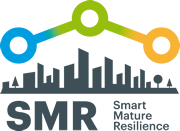“We are creating tools that cities can use to prevent disasters, and to be prepared for when they occur. It is also important that cities learn from each other's experiences, good and bad," said Professor Jose J. Gonzalez, the University of Agder (UiA). He is the acting scientific coordinator for the European-funded research project Smart Mature Resilience, in which the UiA and the Municipality of Kristiansand, along with six other European cities and five research and international institutions, develop models for how cities can prepare for natural disasters such as sea level rise, extreme weather, flooding and landslides, as well as terrorist attacks and major accidents.
Involve more institutions
In several of the models that the crisis management research project has prepared for various disaster scenarios, it is recommended to involve far more institutions, public and private bodies than only emergency services departments and municipalities. "After the flood, it became clear, for example, that locally, we could have involved more volunteer organizations and the general population in general. Experiences from other places have also shown that it can be effective to prepare people for disasters occurring, and to train them into how they should respond, "says Sigurd Paulsen, deputy chief executive officer in Kristiansand Municipality, explaining: "We can warn or prepare people living near vulnerable areas about the risk of flooding, avalanches or acute pollution from a company or similar. The information can go to charity or non-governmental organizations, or directly via text, email or social media. The emergency response manager believes that such information must be targeted and is probably most effective if the recipients perceive a real threat. For example, it may be easier to understand the need for increased preparedness now after a serious flood occurred than a before part of the country was inundated with flood waters.
A broad-researching topic
"The serious flooding this autumn drew attention to the research project, but it's about so much more than just flooding and extreme weather," says Jose J. Gonzalez. “In addition to natural disasters, the research project deals with how cities can prepare and handle conditions such as heatwaves, juvenile delinquency and economic changes.
Several of the models have already been tested and have already achieved good results in cities such as Vejle and Glasgow. In both cities, they have managed to turn economic recession into new optimism and growth, "said Jose J. Gonzalez.
Three of the cities that participated in the research projects, Bristol, Glasgow and Vejle, already began developing resilience ten years ago in order to better cope with unforeseen events. To make this happen, the cities have expanded their cooperation with business, the city's organizations and universities, and have gotten citizens involved in city processes.
"In these three cities, the investment has had positive ripple effects. The cities have managed to turn business downturns to positive growth," says Jose J. Gonzalez.
NOK 45 million
The research project has a budget of €4.6 million or about 45 million kroner. Of this, UiA has 9 million kroner over three years.
"Without being able to answer for the entire organization, I think there can be much to gain for Kristiansand municipality," says Sigurd Paulsen.
Original text: Torbjørn Witzøe, Fædrelandsvennen. Translation: Clara Grimes, ICLEI Europe.





